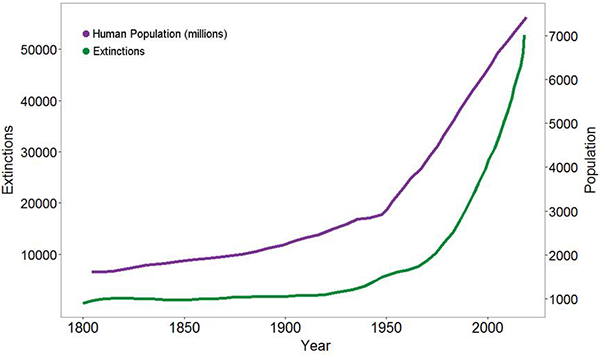Odds against tomorrow without ultimate sacrifice


Haunting Vibe: Milton Jackson’s vibraphone provided the haunting melancholy of Skating in Central Park, stealing the limelight of the title track of the Modern Jazz Quartet score for Belafonte-featuring film noir Odds Against Tomorrow. The odds of the bulk of humanity surviving another century without a population moratorium are plainly much less than with one. image United Artists
As if its bureaucrats needed any encouragement.
Trump’s America now has its Environmental Protection Authority peddling the equivalent of Lisa Simpson’s Ignorital©.
The agency requires its officials to lace their public utterances with phrases contrived to give the impression that evidence of anthropogenic global warming is, at best, debatable.
Then there’s the ponderous Intergovernmental Panel on Climate Change, with its grinding seven-year cycle of politician-censored reports based on already chronically outdated data and research. But when Dr James Hansen published a discussion paper in 2015 on an open-review website warning that up to 5 metres of sea-level rise may occur over the course of the following 50 years, he was eviscerated by other scientists for publishing ahead of peer review. Given the likely impact—an estimated 170 coastal communities subjected to chronic flooding in less than 20 years in the United States alone—the need for an authoritative, continually peer-reviewed climate wiki is abundantly evident.
Low-balling of significance of sea-level rise, or of any other global warming impact, such as the Environmental Protection Authority is now being directed to do, is one thing. But it is also what the mainstream media is predisposed to doing, given its desire to not alienate its pro-growth revenue source—its advertisers. But it’s also the readers who are predominantly pro-growth, of their own family line—short of actually winning a lottery, or, collectively, a sporting world cup, there are few things more celebrated than the news of an impending birth.
While restraint is important in reducing the fossil fuel impact of a burgeoning global population, abstinence—as any ex nicotine addict will readily attest—is far easier that restraint. And in the case of abstaining from reproduction, it could quickly be made to be far sexier than stopping at two, or even one. This is because a population moratorium is the only course available to humanity that will give it a fighting chance of extricating itself from the global warming minefield it has sleep-walked into—something climate scientists lie awake at night in dread of but are typically too scientifically reticent to publicly acknowledge. Those young people who risk the wrath of family and the reprisals of the business world to become the face of the global breeding moratorium will enjoy power and fame, and unparalleled infamy. Their actions in becoming the first generation to relinquish the right to reproduce, to instantly slash fossil-fuel emissions, particularly from new construction, against a backdrop of ever more extreme weather events and accelerating sea-level rise, will confer on each and every moratorium participant hero status that was once reserved for those defending their country or faith during armed conflict.

Pointing to Twin Population Moratoria: In addition to global warming, fossil fuels have powered human population growth, at the expense of other species. An immediate moratorium on breeding is not only the best shot humanity has to avoid future famine of more than Biblical proportions, it is the only hope for fellow creatures, great and small. chart Center for Biological Diversity
The odds against tomorrow’s climate being survivable could suddenly be revealed as being very high, and, regardless, mankind has already precipitated a species extinction event that, at least, is on the scale of that that did for the non-avian dinosaurs:
The only rational response is for a couple of generations to make the ultimate sacrifice; to immediately taihoa on the Biblical injunction to go forth and multiply. The risks from blundering deeper into the global warming minefield can only be guessed at. What is known is that methane fueled the ultimate catastrophic phase of the Permian–Triassic global warming extinction event, which dwarfed the later, dinosaur-destroying Cretaceous–Paleogene event. Yet methane barely gets a mention in the Intergovernmental Panel on Climate Change reports, not because the risks it poses are minimal, but because the risk, which is potentially cataclysmic, is yet to be convincing scientifically demonstrated. Generally, the more global warming science that is done, the more dire the prospects prove to be, and that on methane, scarily, is no exception:

Renewables Remarkably Small Ramp: Photovoltaic, just a fraction of the renewables collectively displayed here, may have ramped up rapidly from zero, but the mainstream media needs to come clean on the magnitude of the task of weaning modern civilisation off the fossils that have fueled its precipitously overpopulous rise. Global primary energy consumption (million tonnes oil equivalent), ±1991–2016—which the global financial crisis took the merest nick out of. chart BP | recoloured for clarity by Mahurangi Magazine
Apologists for growth are insistent that humanity can have its cake and eat it—that all that is needed is for growth to be sustainable, or to be green, or finally, given that neither has slashed greenhouse gas emissions, for growth to be disruptive. Humanity, having flatly rejected the 1972 Club of Rome warning that continued growth on a finite planet was unsustainable, is showing scant signs that it is capable, inclined or prepared to adapt itself to a post-carbon era. The growth of air travel alone is an indicator of the abject disinterest in putting planet before self. Meanwhile, wealthy cake-and-eat-it evangelists jet around the world reassuring the gullible that there is no need for alarm; the third-industrial-revolution future will be so 3-d-printed and bountiful that material stuff will be too cheap to meter. With the infrastructural wheels, worldwide, and locally, already falling off through lack of interest in investment for the future, the cost to the next couple of generations to remedy that, plus pay for infrastructure to be sea-level-rise proofed, and to accommodate 11.2 billion by 2100, and all without the free fossil-fuel-leg-up that civilisation has exploited to date…
A youth-led breeding moratorium to radically improve the odds against tomorrow’s climate becoming unsurvivable is the ultimate sacrifice, but is humanity’s best and possibly only hope.
